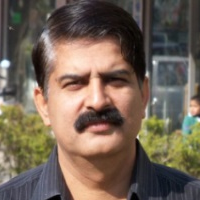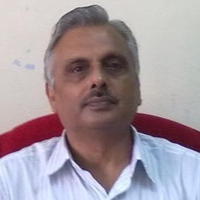International Journal of Image, Graphics and Signal Processing (IJIGSP)
IJIGSP Vol. 6, No. 1, 8 Nov. 2013
Cover page and Table of Contents: PDF (size: 242KB)
Classification of High Blood Pressure Persons Vs Normal Blood Pressure Persons Using Voice Analysis
Full Text (PDF, 242KB), PP.47-52
Views: 0 Downloads: 0
Author(s)
Index Terms
Voice analysis, blood pressure, acoustic parameters, Kmean algorithm
Abstract
The human voice is remarkable, complex and delicate. All parts of the body play some role in voice production and may be responsible for voice dysfunction. The larynx contains muscles that are surrounded by blood vessels connected to circulatory system. The pressure of blood in these vessels should be related with dynamic variation of vocal cord parameters. These parameters are directly related with acoustic properties of speech. Acoustic voice analysis can be used to characterize the pathological voices. This paper presents the classification of high blood pressure and normal with the aid of voice signal recorded from the patients. Various features have been extracted from the voice signal of healthy persons and persons suffering from high blood pressure. Simulation results show differences in the parameter values of healthy and pathological persons. Then an optimum feature vector is prepared and kmean classification algorithm was implemented for data classification. The 79% classification efficiency was obtained.
Cite This Paper
Saloni, R. K. Sharma, Anil K. Gupta,"Classification of High Blood Pressure Persons Vs Normal Blood Pressure Persons Using Voice Analysis", IJIGSP, vol.6, no.1, pp.47-52, 2014. DOI: 10.5815/ijigsp.2014.01.07
Reference
[1]Abdelwadood Mesleh, Dmitriy Skopin, Sergey Baglikov, and Anas Quteishat. Heart rate feature extraction from vowel speech signal. Journal of Computer Science and Technology,pp 1243-1251 Nov. 2012.
[2]Nivedita Deshpande, Dr. KavitaThakur, Prof. A.S.Zadgaonkar. Assesment of systolic and diastolic cycle duration from speech analysis in the state of anger and fear. ITCS, SIP, JSE-2012, CS & IT 04, pp. 137–141, 2012.
[3]Dmitriy E. Skopin, Sergey U. Baglikov. Heartbeat feature extraction from vowel speech signal using 2d spectrum. 4th International Conference On Information Technology (ICIT 2009).
[4]Beth Schucker, MA, Davi R. Jacobs, JR., PHD .Assesment of Behavioural risk for coronary diseases by voic characteristics. Psychosomatic Medicine Vol. 39, No. 4 (July-August 1977).
[5]Murlikrishna Viswanathan,Zhen-Xing Zhan,Joon S. Lim. Emotional-Speech Recognition Using the Neuro-FuzzyNetwork. ICUIMC’12, February 20–22, 2012, Kuala Lumpur, Malaysia.
[6]R. J. Baken and R. F. Orlikoff, Clinical Measurement of Speech and Voice. 2nd ed. San Diego: Singular Thomson Learning, 2000.
[7]R. Arefi Shirvan, E. Tahami. Voice analysis for detecting Parkinson’s Disease using genetic algorithm and KNN Classification Method. 18th Iranian Conference on BioMedical Engineering, 14-16 December 2011, Tehran, Iran,pp 278-283.
[8]PRAAT. DOI= http://www.fon.hum.uva.nl/praat/.
[9]P. Boersma and D. Weenink. Praat, a system for doing phonetics by Computer. Glot Int, vol. 5, pp. 341-345, 2001.
[10]M. S. Ardakani, Z. Soleymani, F. Torabinejad, S. M. Khoddami, M. A. Heydari. Fundamental frequency, jitter, and shimmer of adult stutters and nonstutters voice. Audiology, Vol.16, No.2, 2008.
[11]Xin-guang Li ,Min-feng Yao, Wen-tao Huang. Speech Recognition Based on K-means Clustering and Neural Network Ensembles. 2011 Seventh International Conference on Natural Computation.
[12]Balwant A. Sonkamble1,D. D. Doye. Speech Recognition Using Vector Quantization through Modified K-means LBG Algorithm. Computer Engineering and Intelligent Systems Vol 3, No.7, 2012.
[13]Juan Ignacio Godino-Llorente, Pedro Gómez-Vilda,Nicolás Sáenz-Lechón,Manuel Blanco-Velasco,Fernando Cruz-Roldán and Miguel Angel Ferrer-Ballester. Discriminative methods for the detection of voice Disorders. ITRW on Nonlinear Speech Processing (NOLISP 05) Barcelona, Spain April 19-22, 2005.
[14]Jianglin Wang, Cheolwoo Jo. Vocal Folds Disorder Detection using Pattern Recognition Methods. Proceedings of the 29th Annual International Conference of the IEEE EMBS Cité Internationale, Lyon, France August 23-26, 2007.
[15]Xiang wang, jianping zhang, yonghong yan. Automatic Detection of Pathological Voices Using GMM-MLLR Approach.IEEE 2009.
[16]Max A. Little ,Patrick E.MacSharry,Eric J. Hunter,Jennifer,Spielman and Lorraine O.Raming. Suitability of Dysophonia measurement for Telemonitoring Parkinson Disease. IEEE Transaction On Biomedical Engineering,Vol 56,No.4,April 2009.
[17]Paulo R.Scalassara, Carlos D. Maciel and Jose C.Perreira. Predictability analysis of voice signals. IEEE Engineering in Medical and Biology magazine 2009.
[18]Resul Das. A comparison of multiple classification methods for diagnosis of Parkinson disease. Expert Systems with Applications 37 (2010) 1568–1572.
[19]Carlos Dias Maciel, Jose Carlos Pereira and David Stewart. Identifying Healthy and Pathologically affected Voice Signal. IEEE Signal Processing Magazine, January 2010.


